Flashcards for NEET Biology are designed to boost your NEET preparation. Find below flashcards for Structural Organisation in Animals. These flashcards on Structural Organisation in Animals are prepared as per the NEET syllabus. This is helpful for aspirants of NEET and other exams during last-minute revision. Flashcards For NEET Biology – Structural Organisation in Animals, covers all the important points that are frequently asked in the exam. Check BYJU’S for the full set of Flashcards and Study material for NEET Biology. Solve NEET Biology MCQs to check your understanding and outperform in the exam.
Download Complete Chapter Notes of Structural organisation in Animals
Download Now
Download PDF of NEET Biology Flashcards for Structural Organisation in Animals
| Name of the NEET sub-section |
Topic |
Flashcards helpful for |
|
Biology |
Structural Organisation in Animals |
NEET exams |
|
Structural Organisation in Animals |
|
| Simple squamous epithelium | Function- Diffusion, filtration, osmosis
Found in- Walls of blood and lymph vessels and air sacs of lungs |
| Simple cuboidal epithelium | Function- Secretion and absorption
Found in- Tubules in the nephrons and glandular ducts, surface of ovaries |
| Simple columnar epithelium | Function- Secretion, protection and absorption
Found in- Uterus, stomach and intestinal lining |
| Ciliated epithelium | Columnar or cuboidal cells having cilia
Function- Directional movement of mucus or particles Found in- Inner surface of bronchioles and fallopian tubes |
| Unicellular glandular epithelium | Goblet cells |
| Multicellular glandular epithelium | Salivary glands |
| Compound epithelium | Function- Protection against mechanical and chemical stress
Found in- Dry surface of the skin, the moist surface of the buccal cavity, inner linings of pancreatic and salivary ducts |
| Pseudostratified columnar epithelium | Function- Protection, movement of mucus and cells
Found in- Respiratory passage and reproductive tract lining |
| Stratified squamous epithelium | Function- Protection
Found in- Outer skin surface, the inner lining of the buccal cavity, vagina and anal canal |
| Stratified cuboidal epithelium | Function- Protection and secretion
Found in- Male urethra and pharynx |
| Transitional epithelium | Function- Protection and distensibility
Found in- Inner lining of the urinary bladder and urinary tract |
| Fibres secreted by cells of connective tissue | Collagen
Elastic (elastin) Reticular (collagen and glycoproteins) |
| Loose connective tissue | Adipose tissue- store fats
Areolar tissue- contains fibroblast, macrophages and mast cells Reticular tissue- supports the internal framework of liver, spleen, lymph nodes |
| Dense regular tissue | Tendons- join bones to muscles
Ligaments- join two bones |
| Dense irregular tissue | Dermis of the skin |
| Smooth muscle | Fusiform, non-striated and involuntary
Found in- internal organs, stomach, intestine, blood vessels |
| Skeletal muscle | Striated, voluntary, bundled together, parallel |
| Cardiac muscle | Striated, involuntary, intercalated discs present at fusion points. |
| Peristomium | 1st segment of the body of an earthworm |
| Clitellum | Segment 14-16 of earthworm, covered with glandular tissue and forms cocoon |
| Sense organs of earthworm | Gustatory and olfactory- buccal receptors
Photoreceptors- present on the dorsal skin surface, no eyes Tangoreceptors (sense of touch)- epidermal receptors |
| Alimentary canal of earthworm | Buccal chamber- 1 to 3
Pharynx- 4 to 5, contains Chromophil cells in pharyngeal glands Oesophagus- 6 to 7 Gizzard- 8 Stomach- 9 to 13/14, contains calciferous glands Intestine- 15 to last |
| Spermatheca | Four pairs- 6 to 9 segments
store sperms during copulation |
| Reproductive system of earthworm | Hermaphrodite, protandrous and cross-fertilisation
Testes- 2 pairs (10-11) Ovaries- 1 pair at segment 13 |
| Sense organs in cockroach | Auditory receptors- anal cerci
Photoreceptors- simple and compound eyes Thigmoreceptors- antennae Chemoreceptors- maxillary and labial palps, labium and hypopharynx |
| Mouth parts of cockroach | Mandibulate- biting and chewing type
labrum- upper lip labium- lower lip maxillae- one pair, resemble a leg mandibles- one pair hypopharynx- tongue |
| Cockroach digestive system | Foregut (stomodaeum)- buccal chamber, pharynx, oesophagus, crop and gizzard
Midgut (mesenteron) Hindgut (proctodaeum)- ileum, colon, rectum |
Get access to the full set of flashcards for NEET Biology, only at BYJU’S.
Recommended Video:
Exceptions in Biology Class 11 & 12 (Zoology)| NEET 2022 Zoology Exam Preparations
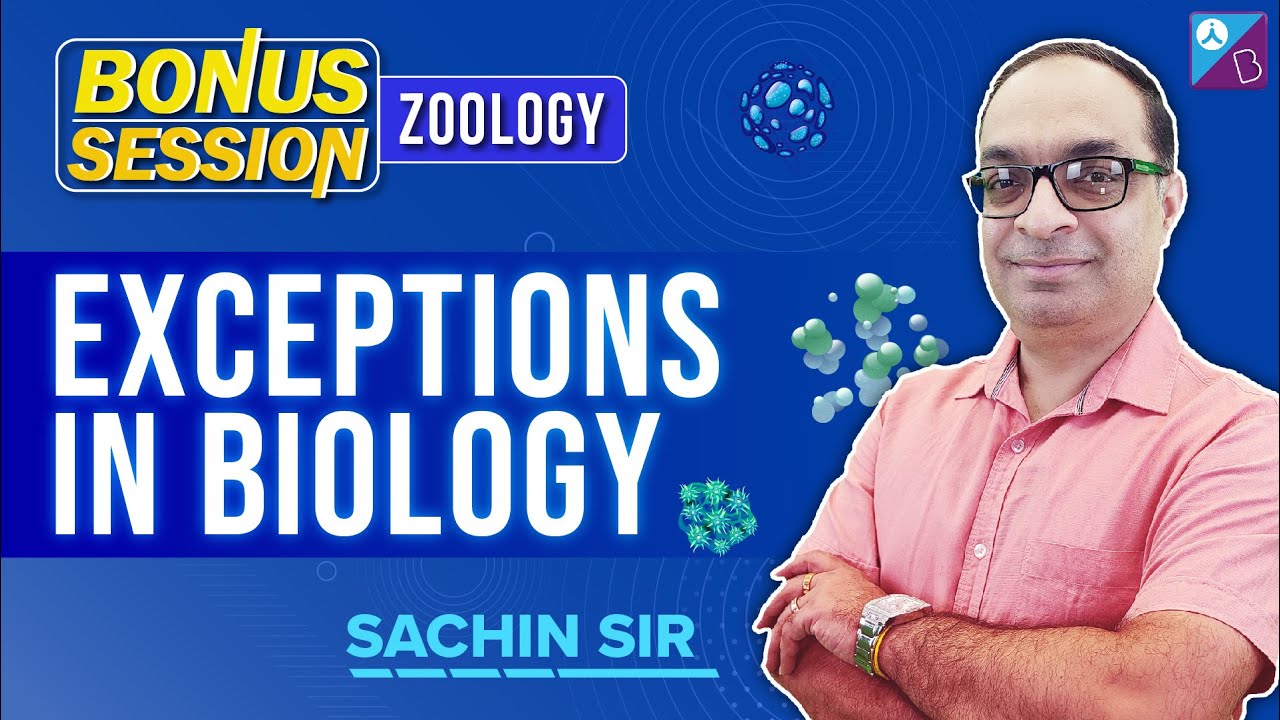

Also Check:
NEET Flashcards: Biological Classification
NEET Flashcards: Animal Kingdom
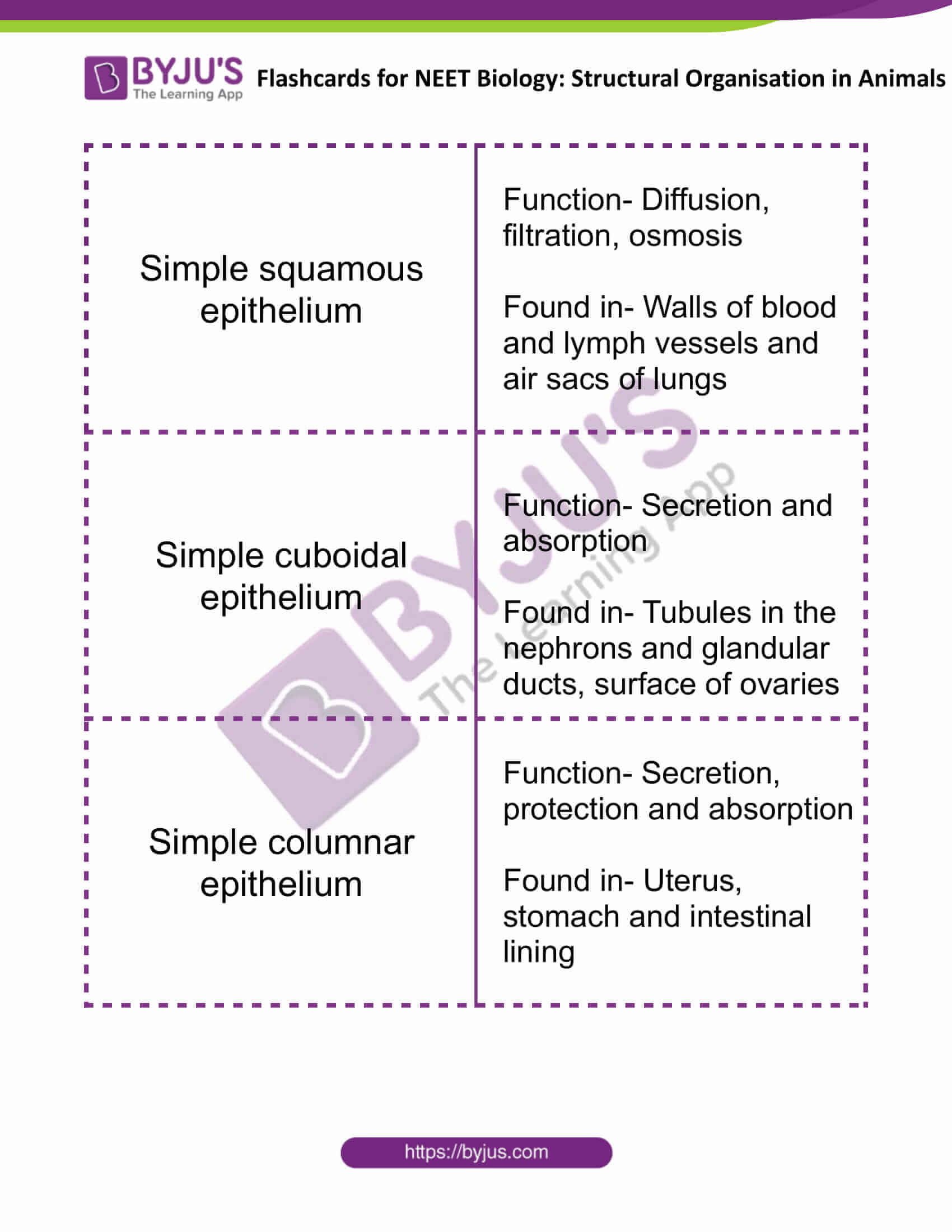
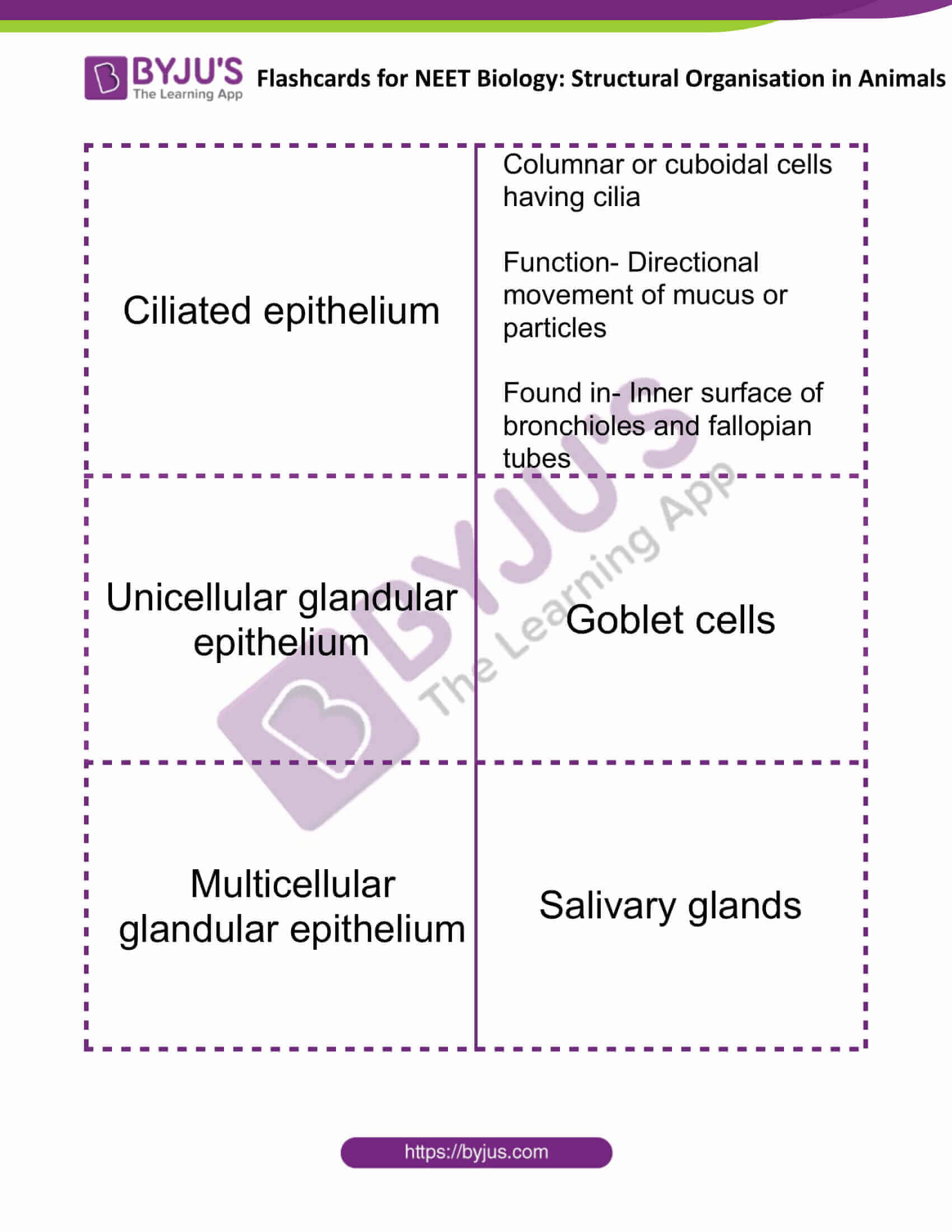
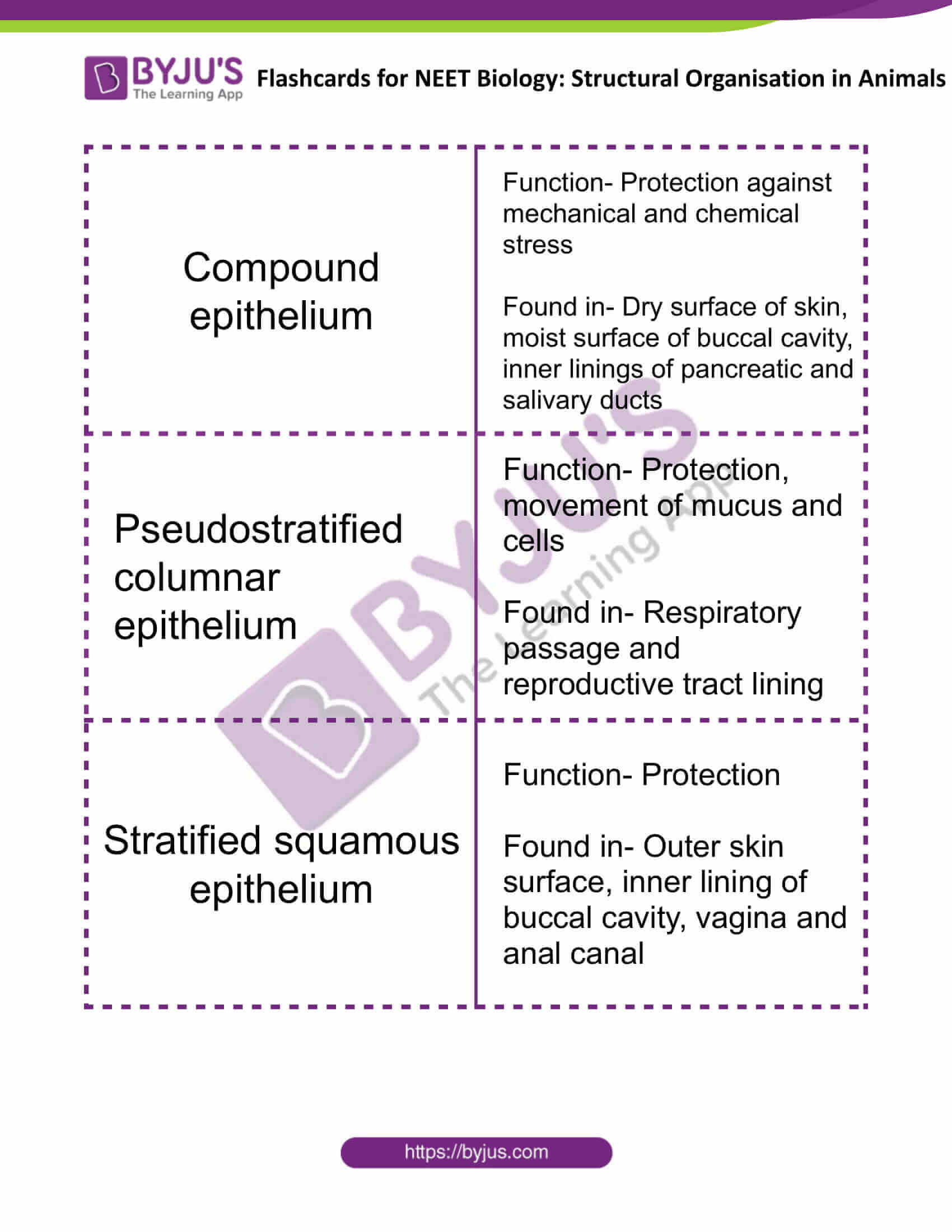

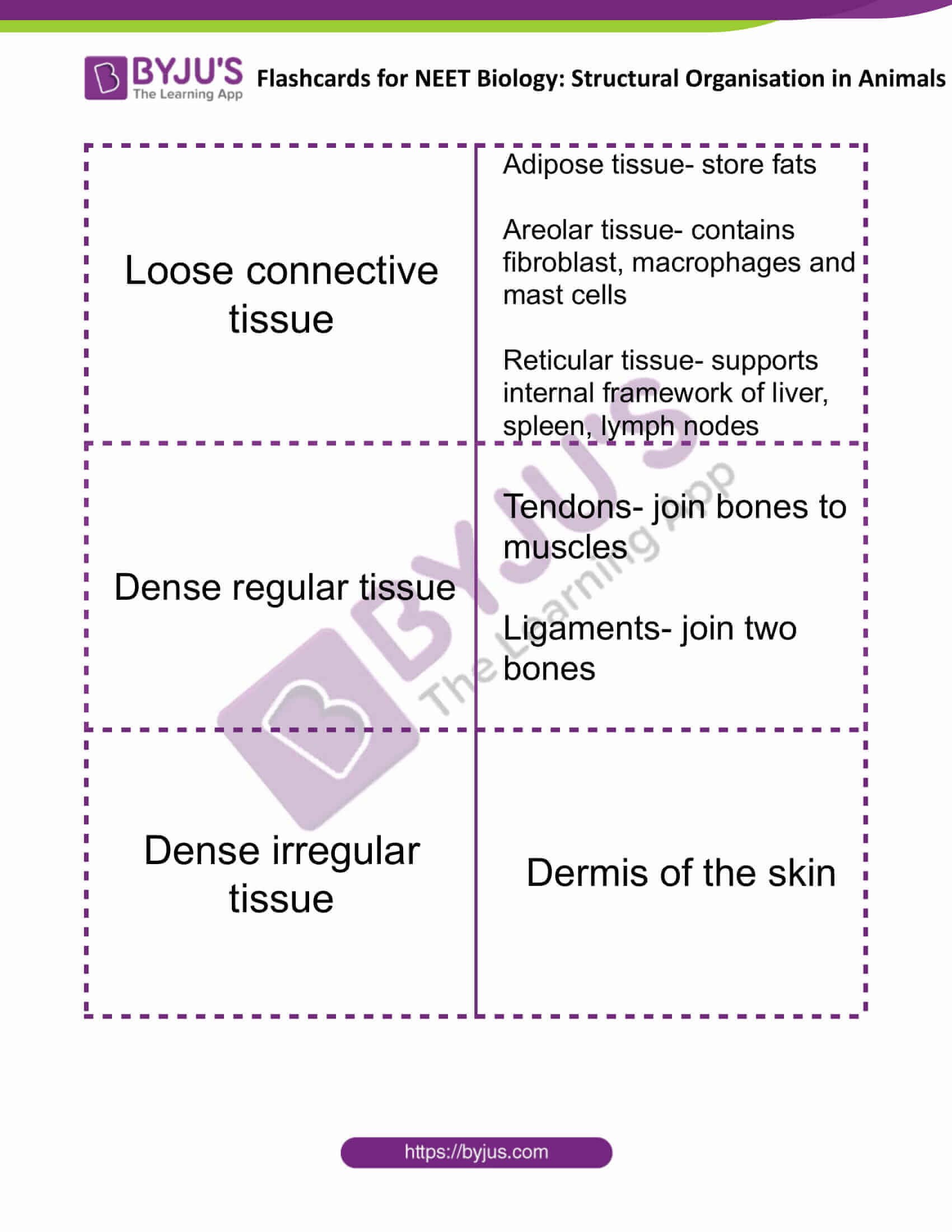
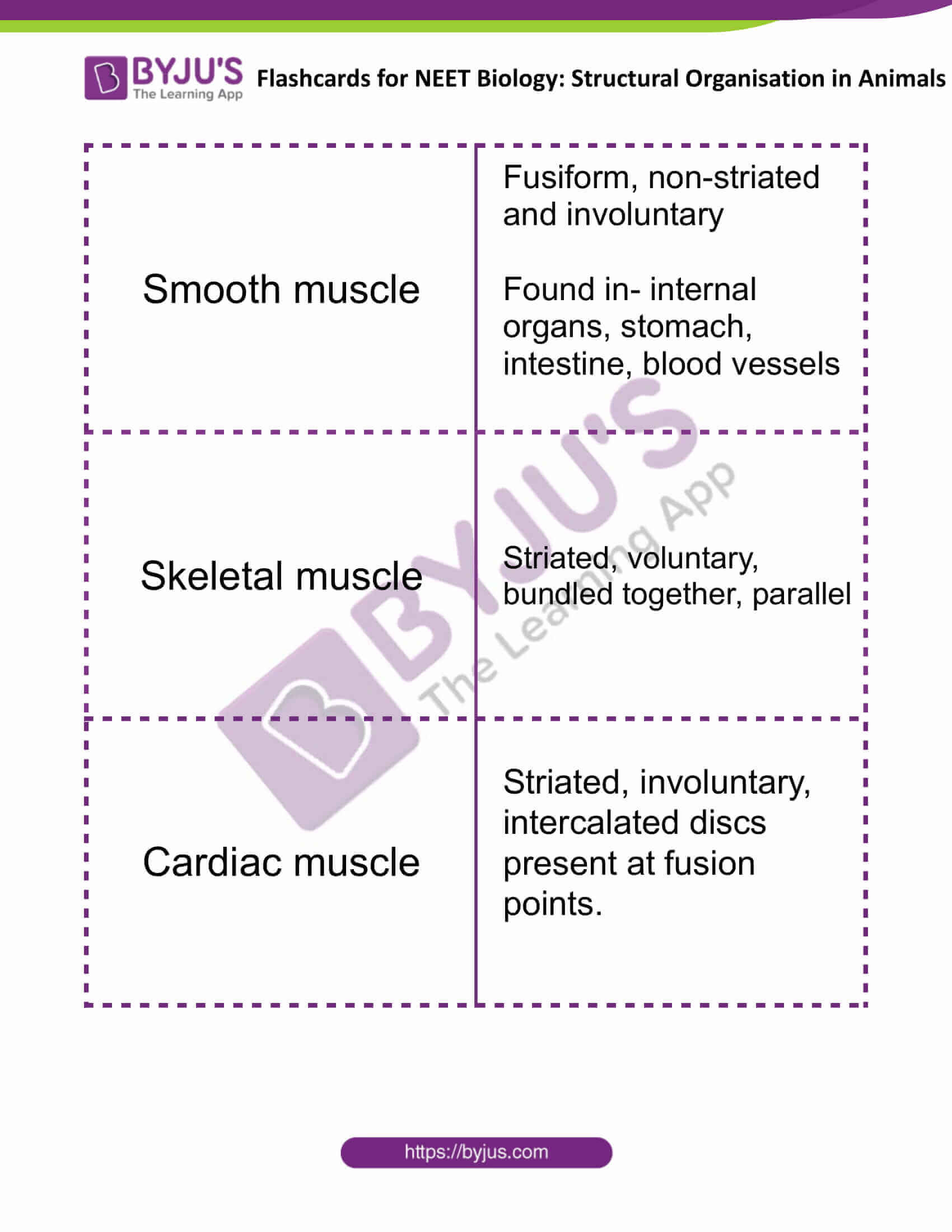
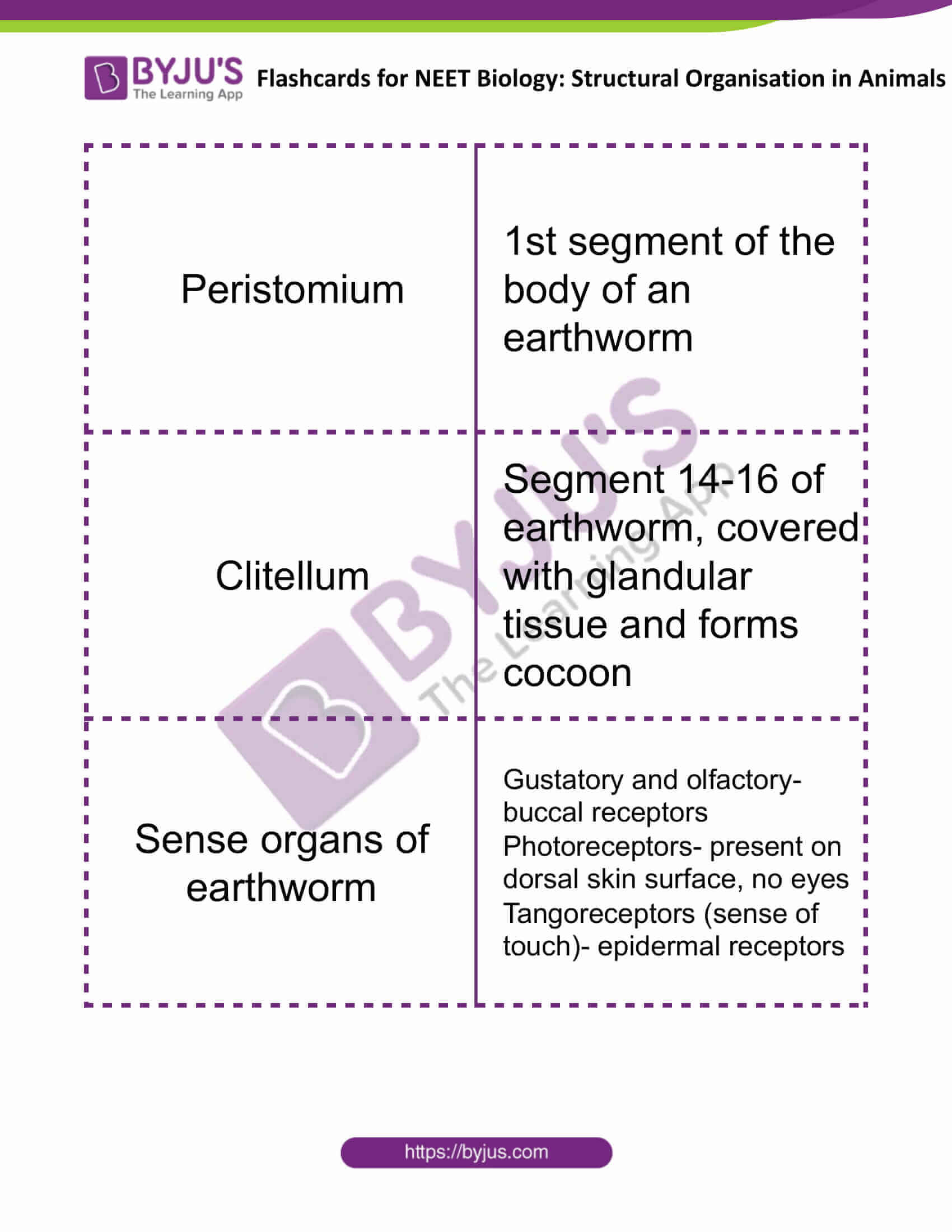

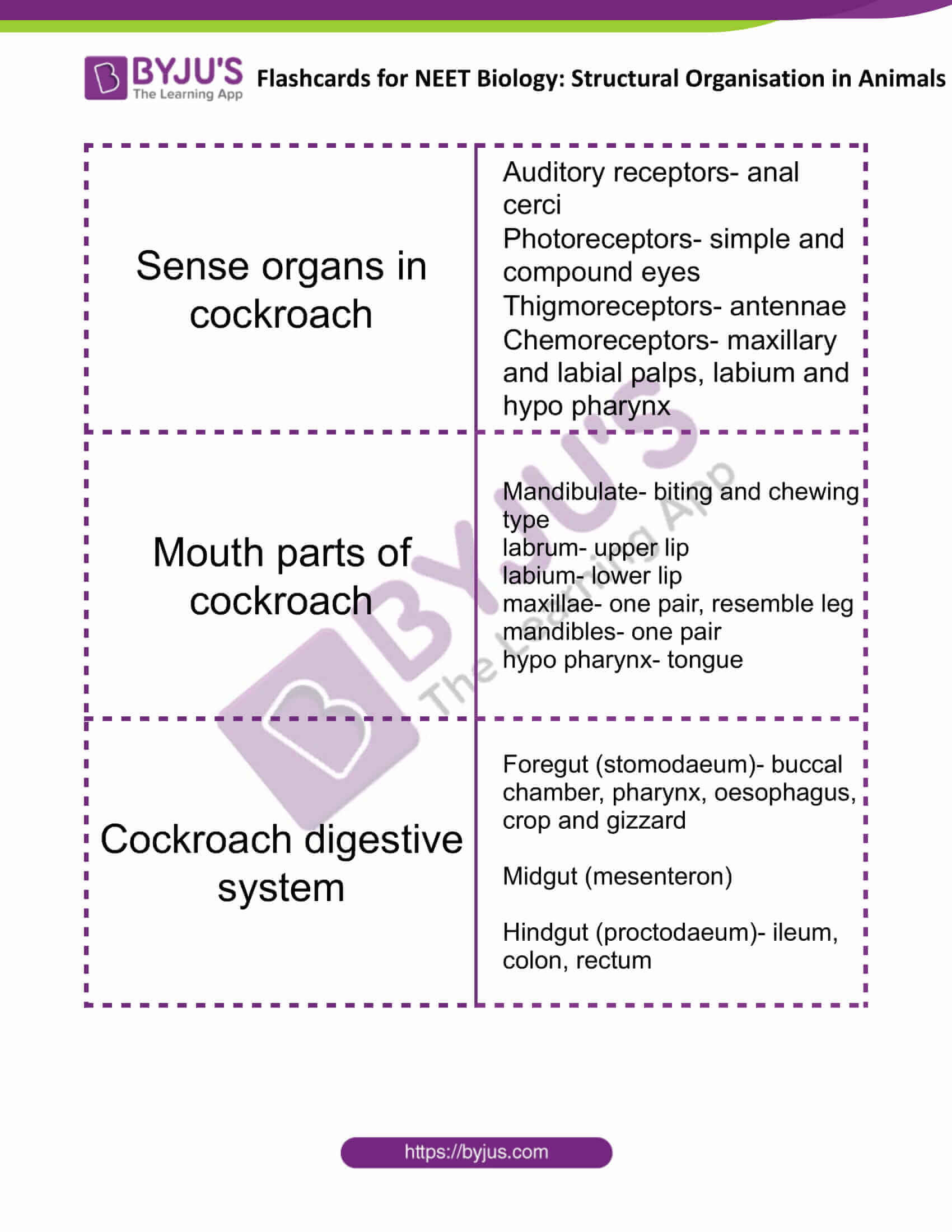
Comments